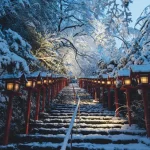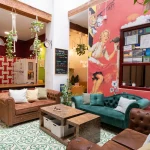Tips for a great city
In 1776, the Spanish established a fort at the Golden Gate and a mission named for Francis of Assisi. The California Gold Rush in 1848 propelled San Francisco into a period of rapid growth, transforming it into the largest city on the West Coast at the time. After being devastated by the 1906 earthquake and fire, San Francisco was quickly rebuilt, into a metropolitan city fueled by, massive immigration, liberalizing attitudes, and other factors giving rise to the Summer of Love and the gay rights movement, and cementing San Francisco as a liberal bastion in the United States. The diversity in San Francisco can be seen throughout the city, Specifically through Its diverse districts.San Francisco historical district is located in the northeast quarter of the city running along Market Street to the south. It is here that the Financial District is centered, with Union Square, the principal shopping and hotel district, nearby. Cable cars carry residents and tourists alike up steep inclines to the summit of Nob Hill, once the home of the city’s business tycoons, and down to Fisherman’s Wharf, an area featuring Dungeness crab from a still-active fishing industry. Also in this quadrant are Russian Hill, a residential neighborhood with the famously crooked Lombard Street, North Beach, the city’s Little Italy, and Telegraph Hill, which features Coit Tower.
San Francisco’s Chinatown is the oldest in North America, also the largest Chinese community outside of Asia. It is a simple walk from north beach and on average draws more visitors per year than the Golden gate Bridge. Chinatown has been the inspiration for many Artist and Authors. The Joy Luck Club written by aia grew up in the Neighborhood and based the book on her experiences here as well as it chronicles the neighborhood’s history. It has also been featured in many food television programs dealing with ethnic Chinese cuisine. China town is also famous for local for its cheap and tasty Dim sum (literally meaning “touch the heart”), which involves a wide range of light dishes, served alongside Chinese tea.
The Mission District was populated in the 19th century by Californios and working-class immigrants from Germany, Ireland, Italy and Scandinavia. In the 1910s, a wave of Central American immigrants settled in the Mission and, in the 1950s, immigrants from Mexico began to predominate. Recently the Mission is a magnet for young people. In the late 1970s and early 1980s the Valencia Street corridor had a lively punk night life with several clubs including The Deaf Club and Valencia Tool & Die and the former fire station on 16th Street sported what was commonly referred to as “the punk mall” an establishment that catered to punk style and culture. An independent arts community also arose and since the 1990s, the area has been home to the Mission School art movement. Many studios, galleries, performance spaces, and public art projects are located in the Mission, including the Clarion Alley Mural Project, Project Artaud, Southern Exposure, Art Explosion Studios, Artist Xchange, Theatre Rhinoceros, Artists’ Television Access, and the oldest, alternative, not-for profit art space in the city of San Francisco, Intersection for the Arts.
The Haight-Ashbury district located right next to Golden Gate park, is famous for its role as a center of the 1960s hippie movement, a post-runner and closely associated offshoot of the Beat generation or beat movement, members of which swarmed San Francisco’s “in” North Beach neighborhood two to eight years before the “Summer of Love” in 1967. The area still maintains its bohemian ambiance with thriving independent local businesses. It is home to a number of independent restaurants and bars, as well as clothing boutiques, booksellers, head shops and record stores including the well-known Amoeba Music.
San Francisco’s Castro district or best known as The Castro is believed by many to be the world’s best-known gay neighborhood having transformed from a working-class neighborhood through the 1960s and 1970s. It remains a symbol and source of lesbian, gay, bisexual, transgender (LGBT) activism and events. Home to an infamous street Halloween Celebration, and an array of individual style ranging from small dogs dressed in Tuxedoes walking along their masters in only jean shorts walking down streets bannered with pride flags. The District has found new Popularity recently with “Milk†starring Sean Penn, a biographical film on the life of gay rights activist and politician Harvey Milk, who was the first openly gay man to be elected to public office in California. Much of Milk was filmed on Castro Street and other locations in San Francisco, including Milk’s former storefront, Castro Camera.



